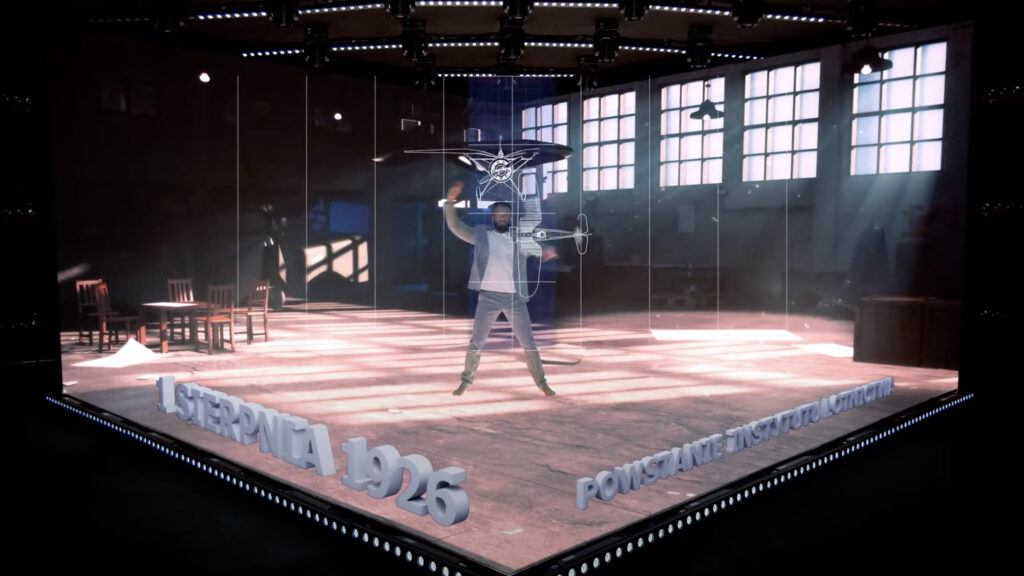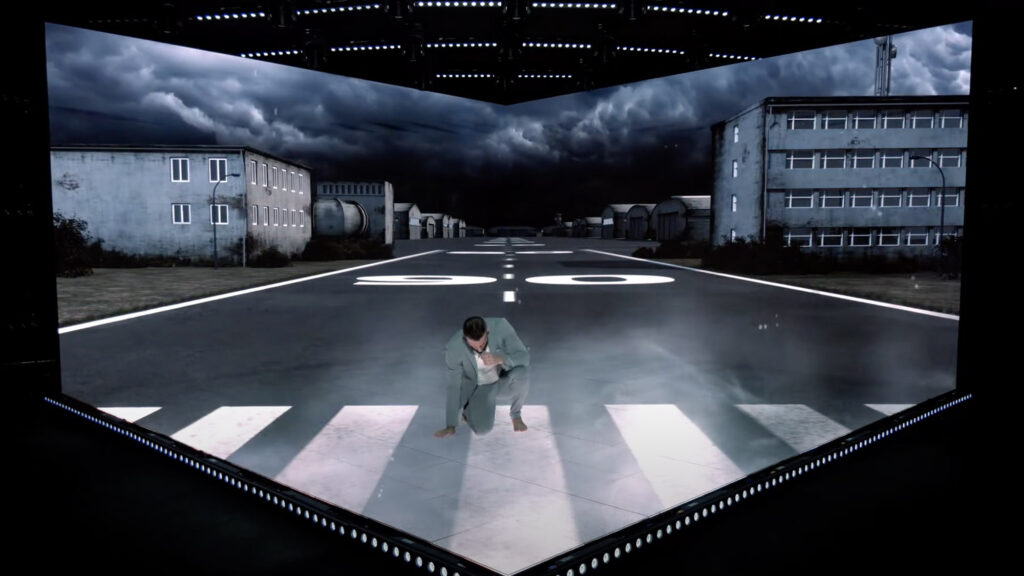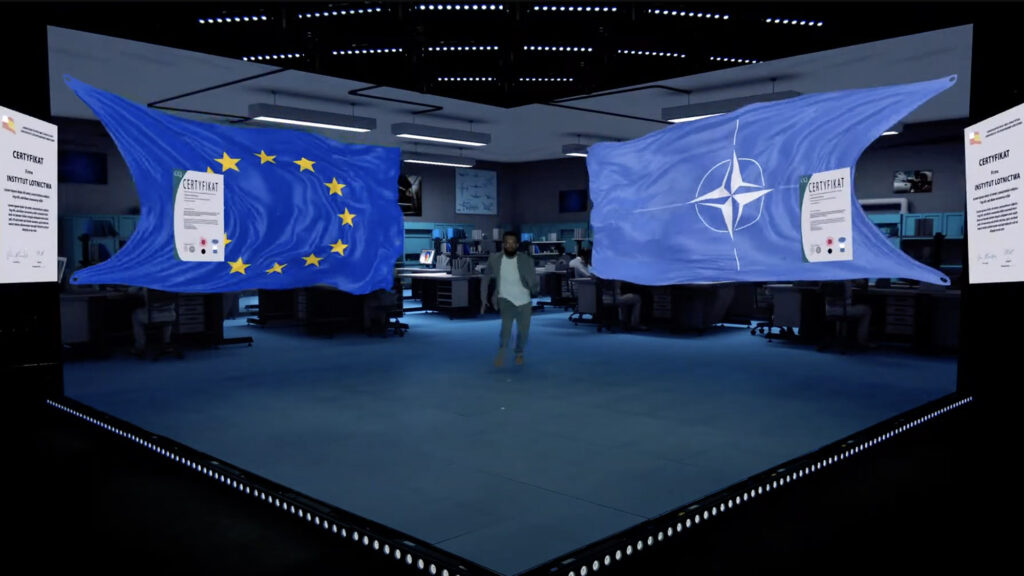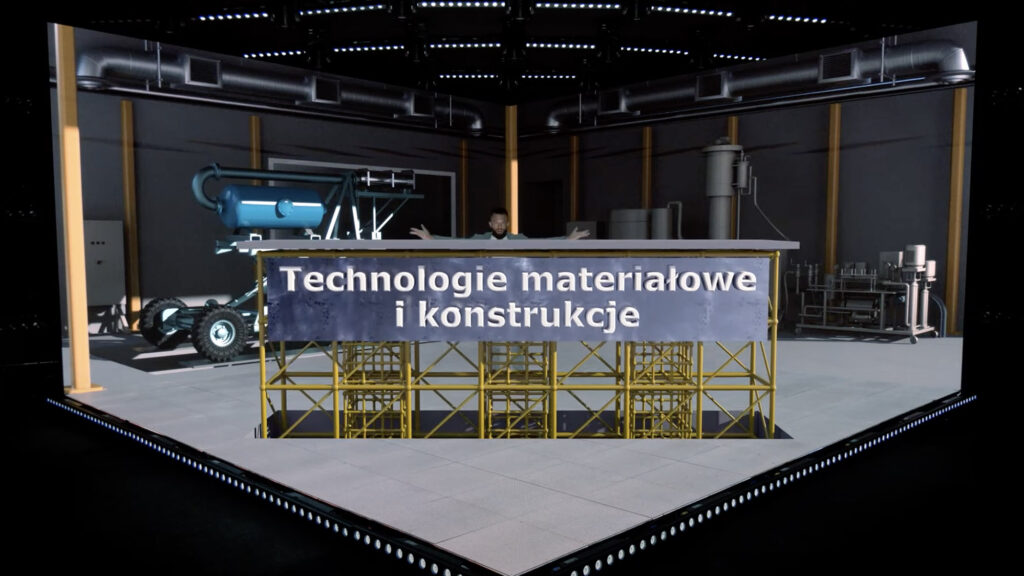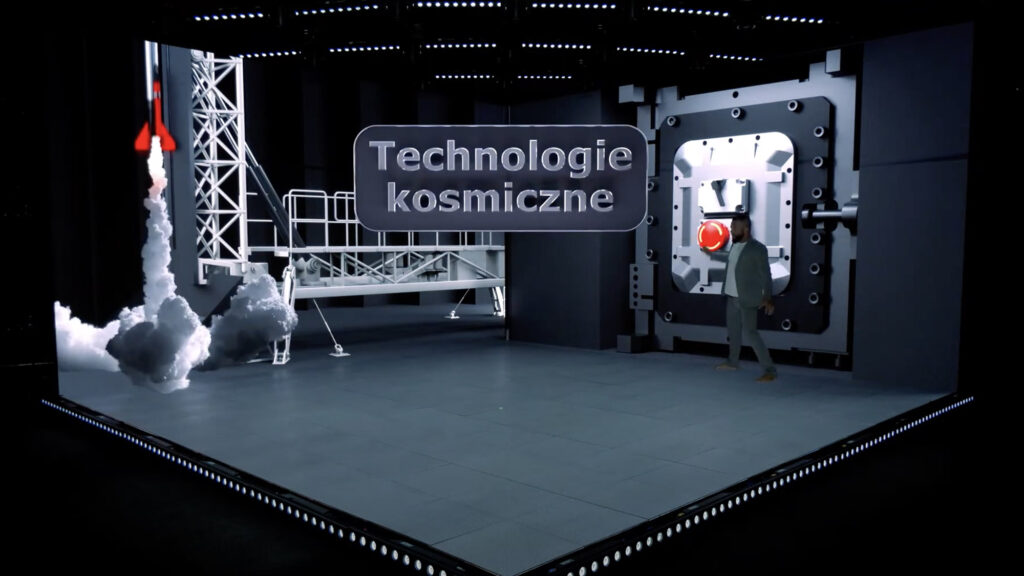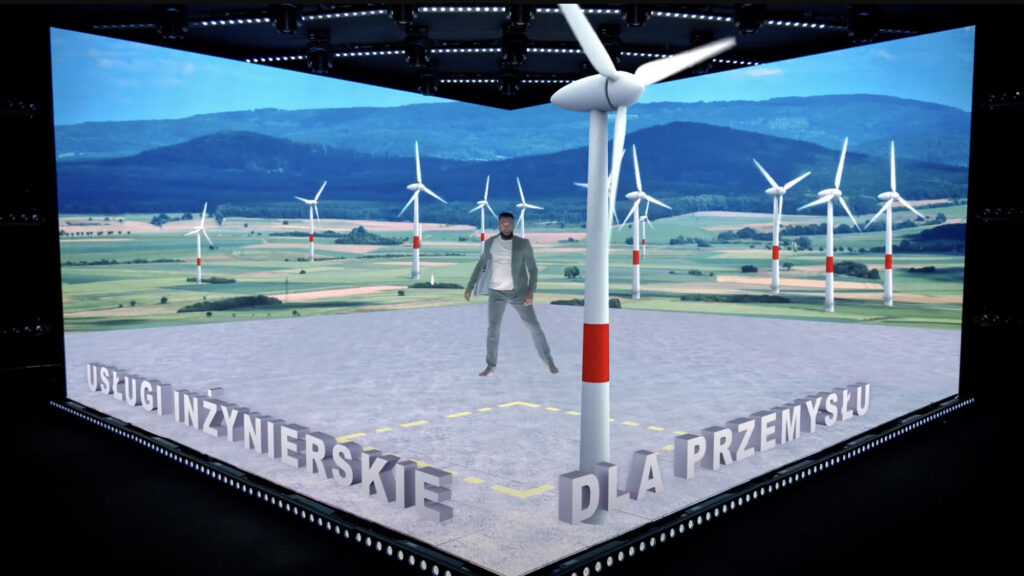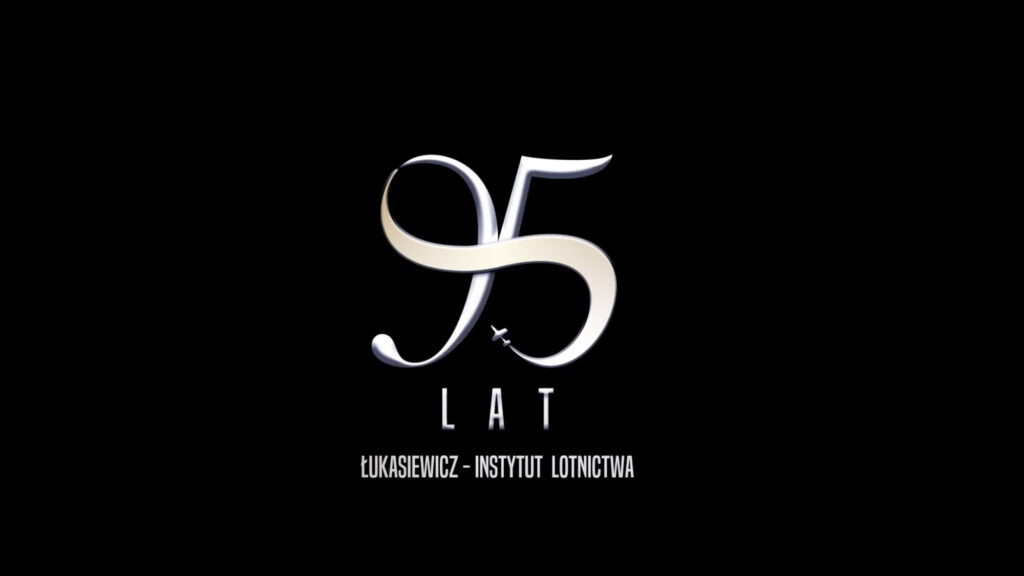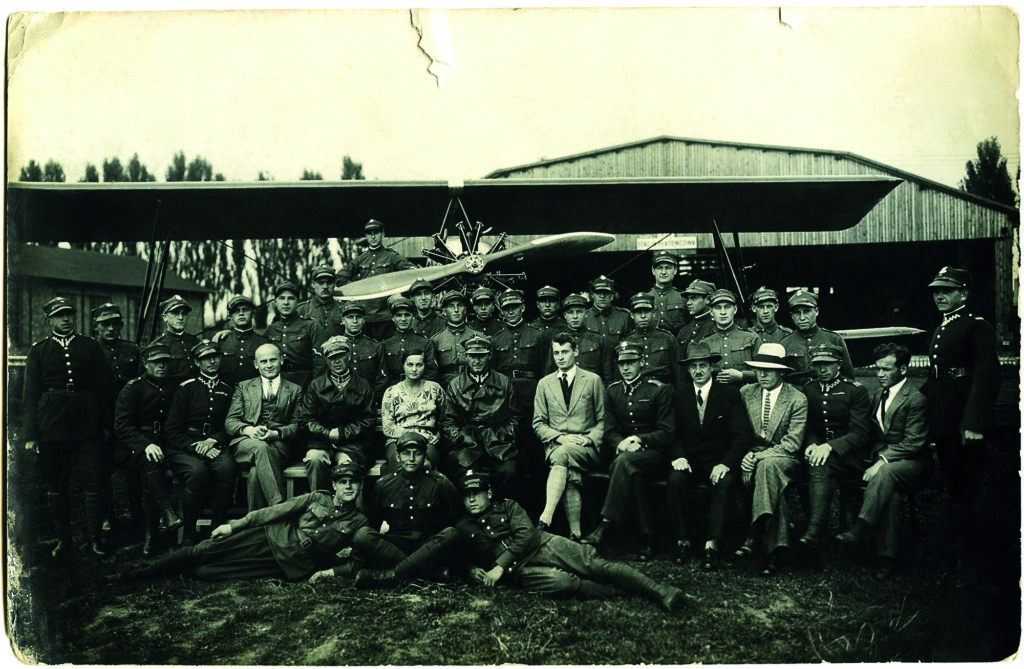Łukasiewicz Research Network
– Institute of Aviation – 95 years
Łukasiewicz Research Network – Institute of Aviation holds a leading position among Polish research and development institutions; just as it was in the inter-war period when it was founded, it sets trends and tasks in the aerospace industry and now also in the space industry. Within the Lukasiewicz Research Network, it collaborates with other institutes to carry out work that helps solve problems in both the national and international economy. The film ”95 Years – Łukasiewicz – Institute of Aviation”, made on the occasion of the anniversary and awarded at the FilmAT Festival, tells the story of all this in a short but beautiful form.
The film won the Grand Prix in the Corporate and Institutional Films category of the 17th FilmAT Festival – the International Festival of Tourfilms, Corporate Films and Television Documentaries, in which I was the International Jury Chairman.
In the short film, the filmmakers had to face two important values that they wanted to communicate to the audience. The first is the huge heritage of 95 years of the institution, and the second is the rank of a scientific institute, so the presentation had to be produced according to the latest trends in corporate film. The award, therefore, indicates that the film must have lifted the judges out of their chairs, and it did!
Although the level of this year’s festival was very high, all the jurors were agreed in their assessment of this film which received the highest marks. As I write this article and know the details of its production, I am not surprised by this success. This is because it was created by professionals from the Institute who feel the art of filmmaking: Marek Gospodarczyk – Head of the Marketing and Communication Department, a filmmaker to the bone, as he is a graduate of the Leon Schiller Film School in Łódź, at the faculty of Film and Television Production, and Magda Wiejacha – Chief Specialist, responsible for the organisation of events at the Institute, a graduate of, among others, journalism and media studies at the University of Warsaw.
The producer was the Institute, which is celebrating its anniversary and is now called the Łukasiewicz Research Network – Institute of Aviation. The film was produced by professionals from two Warsaw studios: VES – involved in event organisation and NEWMOTION – specialising in film graphics and animation. Dancer and choreographer Daniel Stryjecki was engaged in the project.
The result was a work that was unusual for a promotional film, not only communicating important information about the Institute, but also being an interesting artistic work in its own right. The idea of using choreography by Daniel Stryjecki, who, combining elements of rhythmic art and ballet, introduced the viewer to the world of Łukasiewicz – Aviation Institute activities, was excellent. Associated primarily with the Poznań music scene and the Polish Dance Theatre, dancer, choreographer and pedagogue Daniel Stryjecki is known, among other things, for his multimedia presentations combining film with live dance performances.
I have been a juror at promotional film festivals for many years and I have to say that promotional films, especially our Polish ones, rarely take an artistic form that deviates from the cliché. There are, however, some formally and artistically interesting films. this case, the realisers were tempted to go beyond a simple presentation of the Institute’s achievements and capabilities. They demonstrated an ability to go outside the framework imposed by the scientific community and showed that art can be harnessed to promote a research institute. It is gratifying that at Łukasiewicz – Institute of Aviation, high-class professionals work not only in scientific positions, but also in marketing and communication.
***
I interviewed Marek Gospodarczyk, the person responsible for the film. I asked him to reveal the behind-the-scenes of the making of this interesting work.
– The production of the film, on the Institute’s side, was handled by two people. You and Magda Wiejacha. What was your role in the creation of the work? From where did the idea for such a film and its form come from?
– We were celebrating the 95th anniversary of the founding of our institution and wanted to get the message out there in some interesting way. One of the highlights of the celebrations was a film about our history. It was quite a challenge to present so many years of existence in a very short form, and to make it artistically interesting.
The script was inspired by the production with Daniel Stryjecki “100 years of Polish Independence”. It captivated us with its very interesting and innovative shape, the use of modern technologies and the synergy of dance with the background. We decided that this is the direction we would like to take.
– The idea of using Daniel Stryjecki’s choreography was spot on, as in my opinion and that of the jury it decided the Grand Prix at the festival. On top of that, the realisation and message of the film were flawless. You wrote the script and had to find a studio where the ideas could be realised.
– A scenario was created in which Magda and I participated, having the idea, ready in the form of a written concept, we presented it to the management of Łukasiewicz – Institute of Aviation.The project was given the green light and, after some minor adjustments, mainly spotlighting what is more and what is less relevant to the history of our institution, we were able to proceed to the production phase. It was Magda who selected the companies, one having previous experience of working with both entities, two, they were the only ones who basically met the basic concept: a venue with large enough screens ready to go, creating a 3D effect by their size and positioning, and competence in the creation of computer animation and special effects. We also knew that Daniel, who already knows how to approach the subject and is simply great at it, would be irreplaceable here.With a script, technical producers and a dancer already in place, we began work, very dynamic work by the way, to get our work done as quickly as possible.It is worth noting that VES, NEWMOTION, but above all the dancer, were very enthusiastic about our project, treating it as a very interesting challenge – never before had a state institution with such a long history decided to make such a move.
– From my experience as a producer myself, I know that for such slightly crazy, unusual projects you need enthusiasts, film freaks, and I guess that’s what you were and that’s who you found to work with.
– After discussions with Daniel and the graphic designer who was to take care of the 3D animation , and let me remind you that this was the time of the pandemic, meaning that all working meetings were held online, we worked out together a schedule of actions.Interestingly, the work looked completely different to how I was used to working up to that point: after detailing the script, a choreography was created with a complete timeline, to which only then the man from ‘dressing’ our vision in concrete images could move.
– The work was by definition unusual, so the schedule was not necessarily traditional either.
– The next step was to send the technical documentation of the aircraft, buildings, etc. that appeared in the film, in a word, everything that ‘played’ in the production and what we did not have, it was created from photographs or our stories. Here, there was a long, but, looking at the great consensus among the people involved, short time to create the world in which Daniel was to move. Several powerful computers and a staff of graphic designers worked day and night on the digital project for over a month. The collaboration was very efficient and the great thing is that we all had a full understanding of what we wanted to show and how.
– The two of you could be said to have had de facto several functions in the production of the film: authors of the idea, the script; production managers, and directors making the main artistic decisions. In addition, as representatives of the Institute – the producer – you had to supervise the project.
– Me and Magda are very complementary: we have a similar artistic sensibility, moreover, we are both very organised – after a short exchange of ideas, we immediately knew what we wanted to do, in what shape and how it could look production-wise.Not without significance here is the openness of our management, which approached our idea in a very positive way, also agreeing to allocate appropriate resources for the making of the film – for which we would like to take this opportunity to thank them.
If we had to do such a production again, we would definitely use the same companies we selected – full professionalism, commitment and a final result we are very happy with.
– In a corporate film, i.e. an informational and promotional film, the final result is very important. In the jury’s assessment, I always take into account whether the intended purpose has been achieved – a clear presentation of the subject, its history, work, tasks – and, last but not least, the form of the work is very important. The film must be realised in an artistically attractive form that attracts the viewer’s attention. And you have succeeded in doing all this. Congratulations!
***
About the Institute
It is worth exploring the history of this institution and the scope of its work. Łukasiewicz – The Institute of Aviation celebrated its 95th anniversary in 2021. As the Institute of Aviation Technical Research, it operated from 1 August 1926 until the beginning of the war. On 1 August 1936, it was renamed the Aviation Technical Institute.
with the TS-11 Iskra aircraft
with the co-workers
Its activities focused primarily on the testing and certification of Polish military aircraft. It was an important scientific institution setting new trends and tasks in the aerospace industry. Unfortunately, the work was interrupted by the war. Many people working at the Institute continued their activities abroad, especially in England.
After the end of the war, the Aeronautical Institute of Technology was re-established at Okęcie still in 1945 and renamed the Institute of Aviation in 1952. In the first post-war years, the research and design staff were mainly involved in the study of equipment acquired from the Soviet Union and put into licence production, including the design and manufacture of licence biplanes and the Mig-15 fighter aircraft. Work was also done on the development of pulse and jet engines, and work began on the Polish helicopter and the first post-war gliders.
A prominent figure associated with the Institute was Tadeusz Sołtyk, who in 1952 became head of the construction bureau established there. His designs were branded with the initials ‘TS’. In 1955, the first prototype of the new TS-8 Bies training aircraft was flown, and its production for the Polish Air Force began in 1957. His next creation was the first Polish jet aircraft – the TS-11 Iskra trainer-training aircraft flown in 1960. It set 4 world records in its class. The Iskra became the basic and, until 2016, the only training jets in Polish aviation. They were also flown in India. In 1964, Tadeusz Sołtyk began work on the design of the modern supersonic TS-16 Grot training-combat aircraft and the TS-17 Pelikan agricultural aircraft, but unfortunately, by the end of the 1960s, the authorities came to the conclusion that the production of aircraft in Poland was unprofitable and further work was discontinued. Professor Sołtyk left the Institute, but later still consulted on the emerging I-22 Iryda project. This aircraft was designed to replace the worn-out Iskra. In 1980, production of them began at Mielec . Eight were produced and entered the equipment of the Polish Army.
In the following years, further aircraft designs were developed at the Institute: the four-seat composite new-generation I-23 Manager passenger aircraft; the I-25 As two-seat training aircraft; the IS-2 two-seat training and patrol helicopter; and the PRP-560 Ranger patrol and rescue hovercraft. Another challenge was the development of the Meteor 1 weather missile.
In 2019, the Institute joined the Łukasiewicz Research Network. The patron of the Network is the Polish inventor Ignacy Łukasiewicz, whose 200th birth anniversary was celebrated in 2022. The Network consists of the Centre and 22 research and science institutes. The main tasks of the Łukasiewicz institutes are to carry out research projects, not only nationally, but also internationally. An important issue is the commercialisation of the results of the work, their application in the economy, as well as the popularisation of science and knowledge of new technologies.
The range of current scientific research topics currently being dealt with by the Łukasiewicz Research Network – Institute of Aviation is impressive. Most of them concern problems of modern aviation. Among the partners with which the Institute cooperates are global giants such as General Electric, Airbus and Pratt and Whitney. The Institute also conducts research on the space industry and cooperates with other research centres on programmes for non-aviation sectors of the economy.
***
The Director of the Łukasiewicz Research Network – Institute of Aviation, PhD Paweł Stężycki, comments on the tasks facing the facility as follows:
“The development policy of Łukasiewicz – Institute of Aviation is based on the continuation of traditional research areas such as aerodynamics, design and research of aerospace structures, aerospace equipment, propulsion. An important aspect of the activity is also the intensive implementation of new areas, such as computer aided design, new techniques for the study of materials, design of adaptive systems, applications of micro- and nanotechnology, use of alternative energy sources, use of aviation technology in medicine and health care, local air transportation. (…)
Poland’s membership of the European Union has created a wide range of opportunities for cooperation in the field of applied research and development. Lukasiewicz – Institute of Aviation has successfully joined the European research area through partnership participation in EU projects. Further impetus was given by Operational Programmes, implemented by Łukasiewicz – Institute of Aviation. The position of the Institute is determined by the professional level and commitment of its staff. There has been a generational change. Research teams are made up of young, well-educated employees who can realise their scientific and professional ambitions through the projects they carry out.”
Zbigniew Żmudzki
Translation: Wojciech Jaworek
Photos: Łukasiewicz Research Network – Institute of Aviation
17th FilmAT Festival
GRAND PRIX CORPORATE
for
”95 years of Łukasiewicz – Institute of Aviation”
Łukasiewicz Research Network – Institute of Aviation



